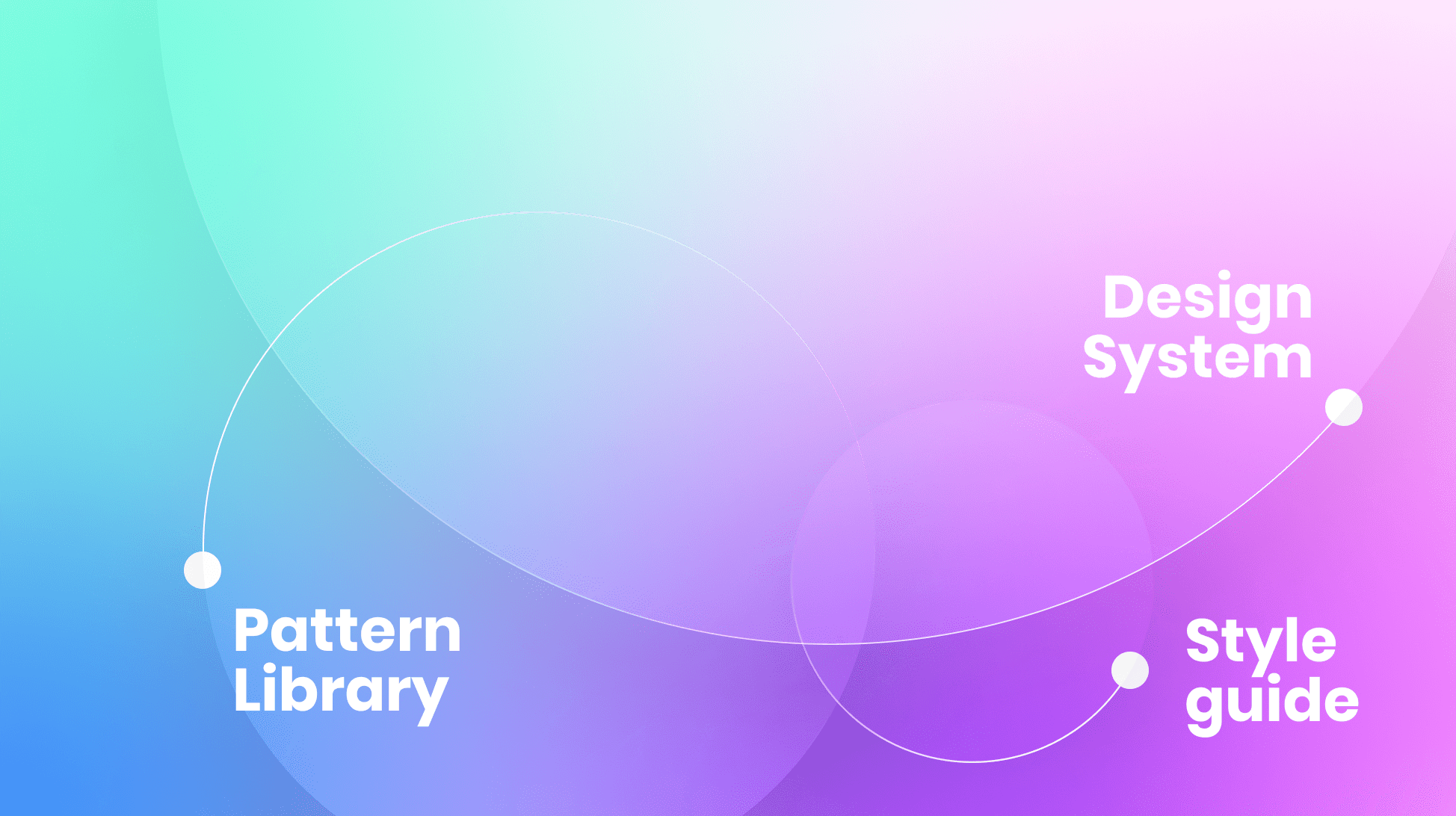
How are Design Systems Different From a Style Guide or Pattern Library?
Learn the fundamental differences between design systems, style guides, and pattern libraries to understand which one fits your project needs best.

Learn the fundamental differences between design systems, style guides, and pattern libraries to understand which one fits your project needs best.
Over the last decade or so, design systems, style guides, and pattern libraries have become increasingly popular (and debated!) in the world of web and product design.
All three of these assets are essential components of a design team's workflow, and they work together to help designers and developers create consistent and cohesive — and hopefully delightful — products.
That said, they're also often confused, which makes sense as they have some considerable similarities. However, they also have some distinctive differences; we'll explore both in this blog post.
At its most basic, a design system is a set of guidelines, principles, and components that work together to create a unified design language. Design systems can include everything from color palettes and typography to design patterns and code snippets, and they often evolve as a team’s level of design maturity grows. They are a collection of shared resources and assets that help designers and developers create consistent and cohesive products.
Design systems form the foundation of a product's design language. They establish the rules and guidelines for how products should look, feel, and behave. A sound design system ensures that every product element is consistent, which helps create a seamless user experience.
A pattern library is a collection of pre-designed UI components. Teams can then reuse those components across a product or set of products.
You’ll often find buttons, form fields, and navigation menus inside of a pattern library. They standardize common UI components to ensure consistency and efficiency — much like a design system does the same.
Pattern libraries provide designers and developers with a set of pre-designed building blocks that they can use to create products quickly and easily. This helps to speed up the design and development process while maintaining a consistent look and feel across the product.
A style guide, on the other hand, is a set of guidelines, rules, and standards for a product's visual and written parts.
When you think of a style guide, it often includes things like color palettes, typography, voice and tone, messaging, and other visual and written elements. Style guides help ensure consistency across a product's visual and written communications.
Unlike a design system or a pattern library, which are usually used mostly by design and development teams, style guides are often used by marketing and content teams to ensure that the product's brand is communicated consistently across all channels. They are also used by product designers and developers to ensure that the product's user interface is consistent with the product's brand.
While design systems, style guides, and pattern libraries share some similarities, they also have some distinct differences.
First is the level of complexity each has. Design systems are more comprehensive than pattern libraries or style guides. Pattern libraries focus on pre-designed UI components; design systems cover everything from typography and color palettes to user experience principles and design patterns. Style guides can include rules for voice, tone, and written communication. Design systems cover everything from typography and color palettes to user experience principles and design patterns.
Second is the level of strategy involved. Design systems are more strategic than pattern libraries. Design systems establish the overarching design language for a product or set of products, while pattern libraries and style guides focus on the individual components that make up that language.
Design systems are also more abstract than both pattern libraries and style guides. Design systems focus on the underlying principles and guidelines that inform a product's design language, while pattern libraries and style guides are more concrete and provide designers and developers (and content and marketing folks) with pre-designed components and rules for voice, tone, and messaging.
These three terms often get confused because they share some considerable similarities. Let’s take a look at them.
The most important and obvious one is that all of these assets make up the essential components of a design team's workflow. They help create consistent and cohesive products while streamlining the design and development process.
The second is unification: all three are concerned with developing unity across a product’s design. Pulled together, they contain virtually all the rules, guidelines, and explanations for how a product should look, feel, and behave and then go beyond that to provide developers with pre-designed components that adhere to those rules and guidelines.
The last similarity relates to how teams work together: all three require collaboration between design, development, marketing, and content teams. Without alignment toward a shared goal and purpose, these assets can become disconnected and lead to siloes within an organization. But when they work well together and are reflective of each other, they can help ensure better communication and collaboration across broad teams.